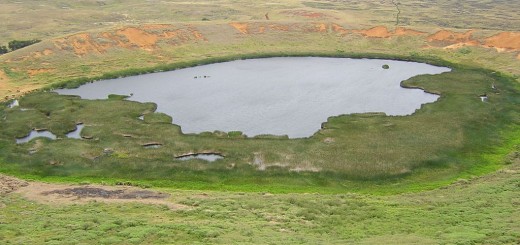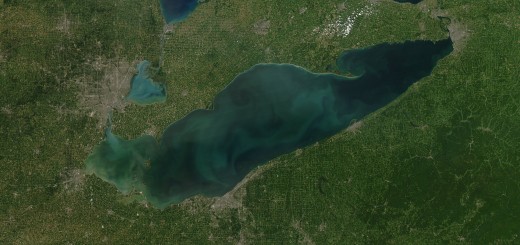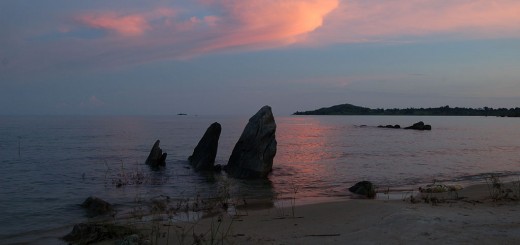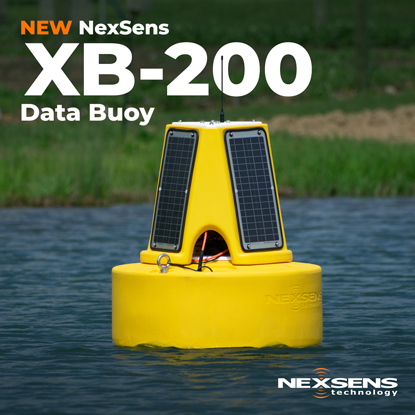In the Muck: Five Algae-Ridden Lakes
0Lake Erie
The fourth largest of the Great Lakes by surface area, Lake Erie has been beset by algal blooms in recent years. One of the worst occurred in 2011. Another bloom affected Lake Erie in 2013. Scientists are again predicting a bloom for 2014, attributing the likelihood to nutrient overloading from fertilizers and waste.
Recent water quality issues affecting Lake Erie and recommendations to improve them are addressed in a report from the International Joint Commission.

Algal bloom in Lake Erie, October 2011. (Credit: NASA Earth Observatory)
Lake Natron
This salty lake is located in Tanzania and fed by the Southern Ewaso Ng’iro River. Excessive evaporation causes salinity levels in the lake to rise to the point that salt-loving microorganisms prosper, including endemic algae that has a reddish pigment.
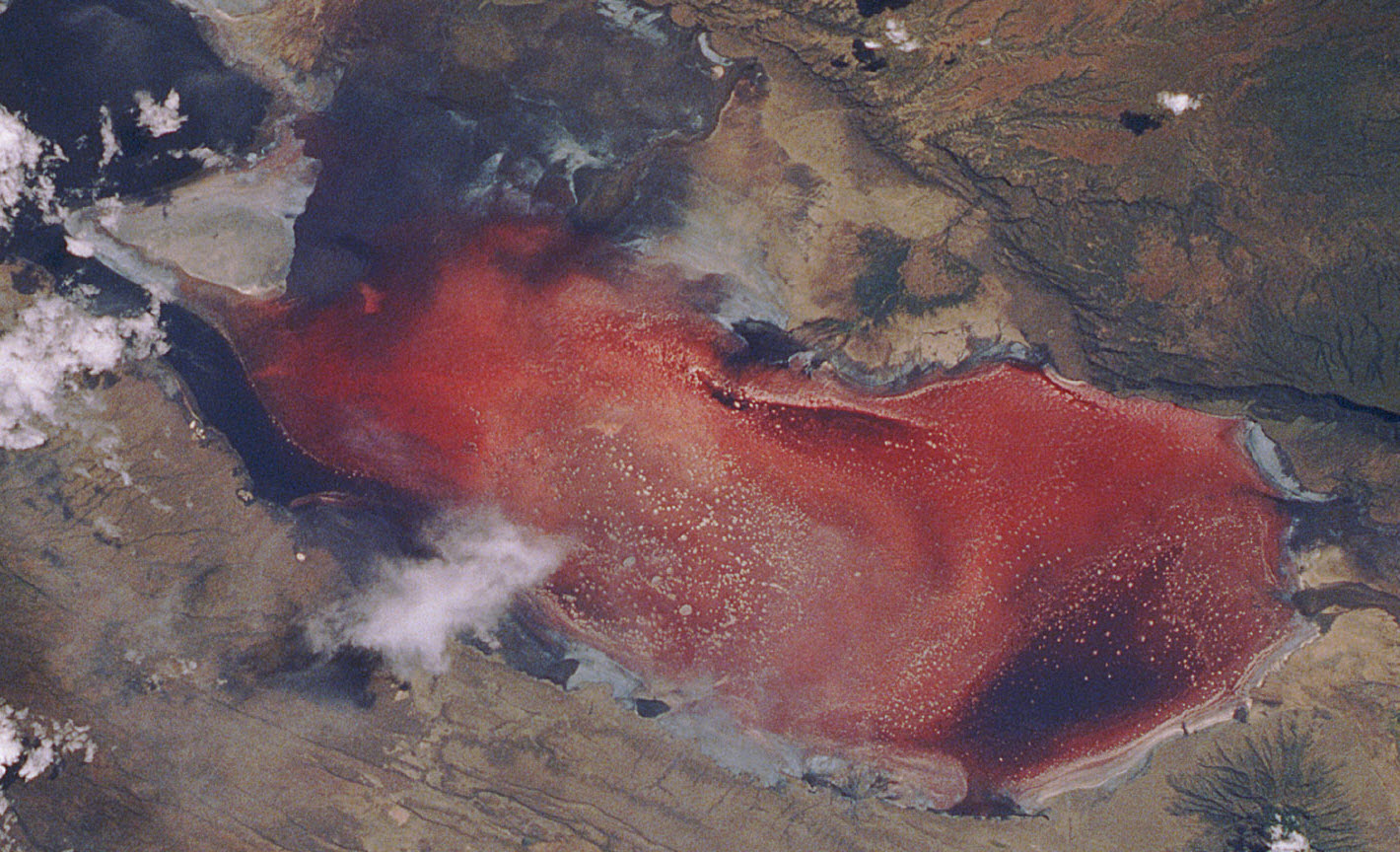
Cyanobacteria that thrive on Lake Natron’s high salt content help color its water red. March 1989. (Credit: NASA Discovery Mission)
Lake Valencia
An endorheic lake, Lake Valencia was formed some 2 to 3 million years ago and has gone dry during different segments of its life. Diversions from surrounding watersheds have contributed to rising waters in recent times. Though it has a good location, its poor water quality limits its attraction to visitors.

Lake Valencia in Venezuela, October 2004. (Credit: NASA Earth Observatory)
Lake Ontario
Ontario is the last in the chain of Great Lakes. It is fed by the Niagara River and serves as an outlet to the Atlantic Ocean via the St. Lawrence River. It once supported a large population of sturgeon, which has diminished since the 19th century.
Blooms have been seen in Lake Ontario, including one in August 2013. The extent of the algae was so great that it could be seen from space, as seen in NASA satellite photos.

Lake Ontario as seen from space in August 2013. (Credit: International Space Station via NASA Spaceflight)
Caspian Sea
This is the largest body of water in the world and its status as a lake is disputed. It has characteristics common to seas and lakes, one of which is algal blooms. Due to agricultural runoff in the region – it is bordered by five different countries – a large bloom developed off its north coast in 2003. Much of the bloom swirled green and blue around the mouth of the Volga River.

The northern part of the Caspian Sea is affected by excess nutrient loads from agricultural runoff. (Credit: Jeff Schmaltz, NASA MODIS Satellite)




